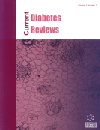
Full text loading...
We use cookies to track usage and preferences.I Understand
Gut microbiota refers to the population of trillions of microorganisms present in the human intestine. The gut microbiota in the gastrointestinal system is important for an individual’s good health and well-being. The possibility of an intrauterine colonization of the placenta further suggests that the fetal environment before birth may also affect early microbiome development. Various factors influence the gut microbiota. Dysbiosis of microbiota may be associated with various diseases. Insulin regulates blood glucose levels, and disruption of the insulin signaling pathway results in insulin resistance. Insulin resistance or hyperinsulinemia is a pathological state in which the insulin-responsive cells have a diminished response to the hormone compared to normal physiological responses, resulting in reduced glucose uptake by the tissue cells. Insulin resistance is an important cause of type 2 diabetes mellitus. While there are various factors responsible for the etiology of insulin resistance, dysbiosis of gut microbiota may be an important contributing cause for metabolic disturbances. We discuss the mechanisms in skeletal muscles, adipose tissue, liver, and intestine by which insulin resistance can occur due to gut microbiota's metabolites. A better understanding of gut microbiota may help in the effective treatment of type 2 diabetes mellitus and metabolic syndrome.

Article metrics loading...

Full text loading...
References


Data & Media loading...

